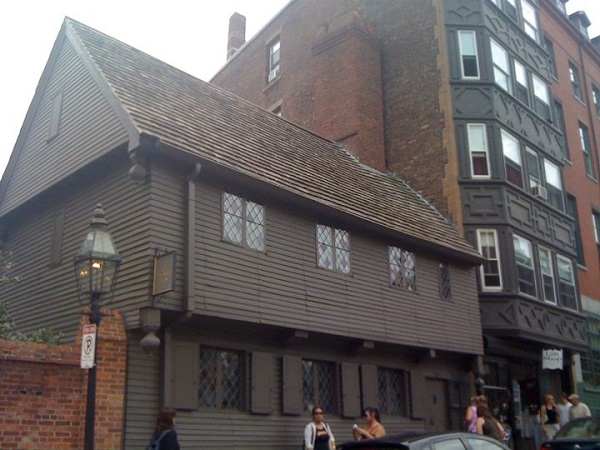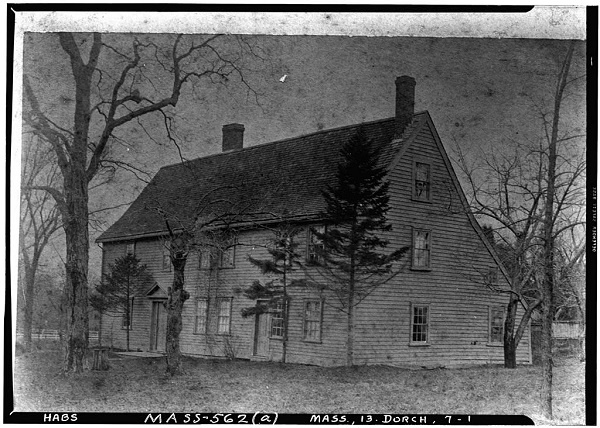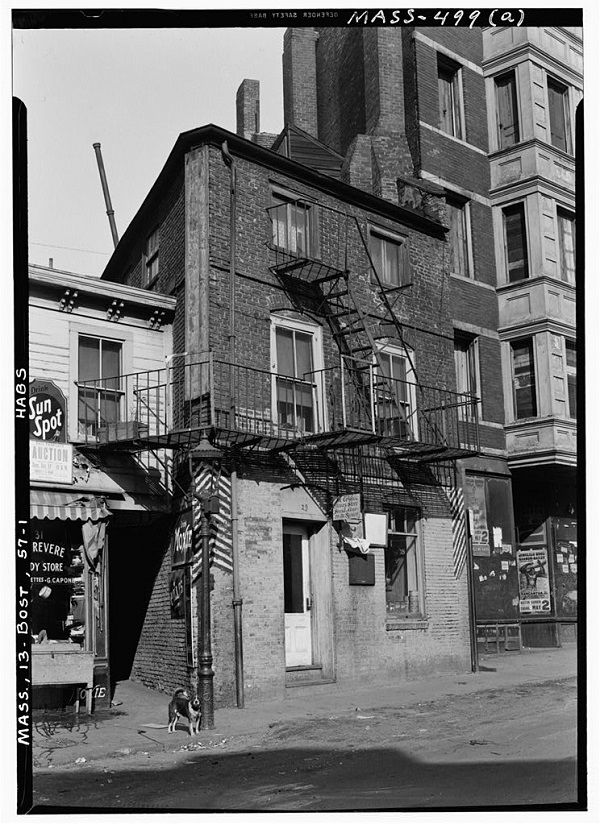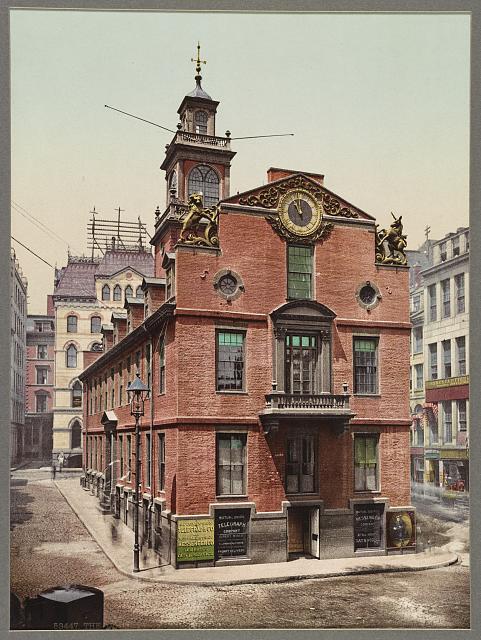Boston is a historic town with many old buildings and historic sites. The town was settled in the 17th century and many of its oldest buildings were constructed during that time period.
While some of these historic buildings are privately owned some of them are also historic house museums that are open to the public.
The following is a list of the 10 oldest buildings in Boston:
James Blake House: 1661
Address: 735 Columbia Road, Boston, Mass.
A first period home built in 1661 by Deacon James Blake that is considered to be the oldest surviving house in Boston.
The house is a two-story, central chimney, timber frame structure with a gable roof. It is constructed out of dark wood shingles with a slate roof which replaced the original wood shingle roof.
The house remained in the Blake family until 1825 when it was purchased by the Williams family. The house changed owners again in 1892 and again in 1895 when it was sold to the city of Boston.
The house was set for demolition in 1896 when the Dorchester Historical Society purchased it from the city and moved it to nearby Richardson Park. The house is open for tours on the third Sunday of the month.
The house was added to the National Register of Historical Places in 1974 and was designated a Boston Landmark in 1978.
Paul Revere House: 1680
Address: 19 North Square, Boston, Mass.
The Paul Revere House is a first period colonial house that is considered to be the oldest building in downtown Boston. Built around 1680, the house is a three-story timber frame colonial house.
The house was first owned by local merchant Robert Howard and was then purchased by Paul Revere in 1770. Revere was living in the house when he made his famous midnight ride in 1775.
In 1800, Revere sold the house and it served as a commercial building throughout the 19th century until it later became a tenement building.
In 1901, the house was purchased by Revere’s great-grandson John P. Reynolds. In 1906, a group of city officials and historical associations banded together to buy the house from Reynolds. The group then sold it to the Paul Revere Association in 1907 who restored it and opened it as a historic house museum in 1908.
The house was designated a National Historic Landmark in 1961 and was added to the list of National Register of Historic Places in 1966.
Thomas Mayo House and Tavern: circa 1680
Address: 2549 Centre Street, Boston, Mass
A farm house that was originally built sometime around 1680 and later owned by local farmer Thomas Mayo.
The land was first purchased or obtained by Mayo’s father, town constable John Mayo, sometime prior to or around 1652.
Sometime before 1687, Mayo gave the land and an existing house on the property to his son Deacon John Mayo.
In 1733, Thomas Mayo inherited the house from his brother and ran it as a farm and tavern. When Mayo died in 1793, he left no will and the house and land were liquidated in an estate sale in December. A month later, his nephew bought some of the land and the house and continued to run it as a tavern.
The house has changed hands many times over the centuries and is now privately owned.
The house appears to have been heavily renovated or remodeled in the late 19th century since it is now a Greek Revival-style house, which was a popular architecture style during that time period. In 1890, the central hearth was removed to make room for boilers for steam heating.
It is not known what parts of the rock rubble foundation, support beams or the frame from the pre-1687 structure remain in the building today.
Robert Pierce House: 1683
Address: 24 Oakton Ave, Boston, Mass.
A first period house owned by the Pierce family for over 10 generations. The house is constructed out of black oak and is a two-and-a-half-story saltbox with an integral lean-to and a brick center chimney.
A full extension was added to the house in the 18th century and a second chimney and second front door were added, which gives the building the appearance of a duplex. In the 19th century, the original central chimney was replaced by a smaller one.
The house was added to the National Register of Historic Places in 1974. It is now owned by Historic New England and operates as a historic house museum.
Major John Pitcairn House: 1700
Address: 130 Prince Street, Boston, Mass.
The Major John Pitcairn House is a Colonial Revival-style house built in 1700 and was owned by Revolutionary War Major John Pitcairn.
The building has been heavily renovated but it is believed that it contains the core of the original Pitcairn House. Pitcairn died in this house after being mortally wounded at the Battle of Bunker Hill in 1775.
The house was originally three stories but an additional floor was added at a later date. The small-paned windows of the Revolutionary War-era were also replaced with modern large glass windows
In the 1890s-1900s, the first floor of the building was converted into a grocery store. In 1916, a rear wooden portion of the house was demolished and the building was renovated.
The building has been altered beyond recognition, according to the Massachusetts Cultural Resource Information System website, and is now currently a four-story brick building with granite slabs above the windows and serves as an apartment building.
Lemuel Clap House: 1710
Address: 199 Boston Street, Boston, Mass.
The Lemuel Clap House is a Federal-style house built around 1710 and then enlarged in 1767.
In 1945, the Lemuel Clapp House and the nearby William Clapp House were purchased by the Dorchester Historical Society.
In 1957, the Lemuel Clapp House was moved several hundred yards from Willow Court to its current location next door to the William Clapp House.
Moses Pierce – Nathaniel Hichburn House: 1711
Address: 29 North Square, Boston, Mass
The Moses Pierce – Nathaniel Hichburn House is a brick Georgian-style building located next door to the Paul Revere House.
The house was built in 1711 for Moses Pierce, a local glazier. In 1780, it was purchased by Nathaniel Hichborn, a cousin of Paul Revere. It remained in the Hitchburn family until 1864.
In the late 19th century, the building was used as a tenement building. From the 1850s and onward, the ground floor was used as a shop.
In 1941, two officials of the Society for the Preservation of New England Antiquities purchased the building at a bank auction in order to preserve it.
In 1949, the building was given to the Pierce Williams House Association who restored the building from 1950-51 and later opened it to the public as a house museum.
The building was named a National Historical Landmark in 1968 and was listed on the National Register of Historic Places.
In 1970, the Paul Revere Association acquired the building and have opened it up for guided tours.
Ebenezer Clough House: circa 1711-1715
Address: 21 Unity Street, Boston, Mass.
The Clough House is a brick Georgian row house built by master bricklayer Ebenezer Clough. Clough built the house on pasture land sometime around 1711-15. It is one of three remaining brick buildings in Boston that date back to the early 1700s.
In 1808, a third floor was added to the house and the building was divided into multiple rental units. It later became a tenement for families.
By the 1920s, the building had fallen into disrepair and was deemed a fire hazard to the nearby Old North Church.
Sometime after 1933, the History American Buildings Survey surveyed the house and deemed it historically significant, prompting the Old North Church to renovate it and preserve it.
The building now serves a variety of purposes for Old North Church & Historic Site, including exhibit hall, gallery, office, and storage space.
Old State House: circa 1712
Address: 206 Washington Street, Boston, Mass
The Old State House is the oldest surviving public building in Boston. Built sometime around 1712-13, the building was the seat of the colonial government for the Massachusetts Bay Colony prior to the revolution. the seat of the Massachusetts General Court until 1798 and served as Boston City Hall from 1830-1841.
The Old State House is most known for being the location where the Boston Massacre took place in 1770, which occurred in front of the building on the night of March 5.
The building was later rented out for commercial use and housed many businesses from 1841 to 1881 and was almost demolished in 1881 before being saved by the newly formed Boston Society. The building now serves as a history museum.
The building was designated a National Historic Landmark in 1960 and a Boston Landmark in 1994.
Union Oyster House: 1716
Address: 41 Union Street, Boston, Mass
The Union Oyster House is the oldest running restaurant in America and the oldest restaurant in Boston. It is believed to have been built around 1716 and housed numerous businesses over the years.
In 1742 it was a silk and dry goods shop known as At the Sign of the Cornfields.
In 1771, the second floor of the building became a print shop where Isaiah Thompson published his newspaper “The Massachusetts Spy” which became the longest running newspaper in America.
In 1775, the dry goods store became headquarters for Ebenezer Hancock, the first paymaster of the Continental Army.
In 1796, the future King of France, Louis Phillippe, lived on the second floor while in exile during the French Revolution.
The building eventually became a restaurant in 1826 and has been once ever since. In 1913, the restaurant was renamed the Union Oyster House.
The building was designated a National Historical Landmark in 2003.
For more information on historic places in Boston, check out this article on the many historic hotels in Boston or this article on the oldest bars in Boston.
Sources:
Documents of the City of Boston. Vol 4, Issues 93-144, City Council, 1906.
Massachusetts Cultural Resource Information System, Massachusetts Historical Commission, mhc-macris.net/
James Blake House. Boston Landmarks Commission Study Report, boston.gov/sites/default/files/embed/j/james-blake_house-study_report.pdf
“BOS. 10474.” MACRIS, mhc-macris.net/Details.aspx?MhcId=BOS.10474
“Pierce House 1683.” Historic New England, historicnewengland.org/property/pierce-house/
“Lemuel Clapp House.” Dorchester Atheneum, dorchesteratheneum.org/page.php?id=224
“130 Prince Street, Boston, Ma.” Apartments.com, apartments.com/130-prince-st-boston-ma/wtc6pll/
“National Register of Historic Places Inventory – Nomination Form: Moses Pierce Hichborn House.” National Park Service, npgallery.nps.gov/NRHP/GetAsset/NHLS/68000042_text
“Pierce / Hicborn House.” The Paul Revere House, paulreverehouse.org/pierce-hichborn-house/
“Still Standing: 300 Years of the Clough House at Old North.” Old North Church, oldnorth.com/still-standing
“Clough House.” City of Boston, boston.gov/departments/archaeology/clough-house
“Ebenezer Clough House.” SAH Archipedia, sah-archipedia.org/buildings/MA-01-NE11
Herwick, Edgar B. “What Is It Like to Live in Boston’s Oldest Home?” GBH, 13 Sept. 2017, wgbh.org/news/2017/09/13/how-we-live/whats-it-live-bostons-oldest-home
MHC Inventory Form BOS. 10474, MACRIS, Massachusetts Cultural Resource Information System, mhc-macris.net/Details.aspx?MhcId=BOS.10474
“History.” Union Oyster House, unionoysterhouse.com/pages/history.html
“Union Oyster House.” HMDB.org, hmdb.org/m.asp?m=18090
“100 Oldest Buildings in Boston.” City of Boston Archaeology Program, docs.google.com/spreadsheets/d/1c8IYR0qYgf0kqQFYMU_iLbI6d8oR5vk5S99nNMvmRqo/edit#gid=0







Very nice reading articles. I’ve been to Boston many times but never visited any historical sites. My visits where to the BU area where my daughter attended from 2012 to 2016. Planning to visit Boston in March of 2023 just to do that.
There is, or was, a trolly tour that took you all over the historical sites, including
Mother Gooses Grave (lol), and Old Ironsides. I can’t recommend it enough if there still is one. Trying to drive will piss you off, walking the Freedom trail is a possibility but the tour will give you an idea of what you might want to explore further.